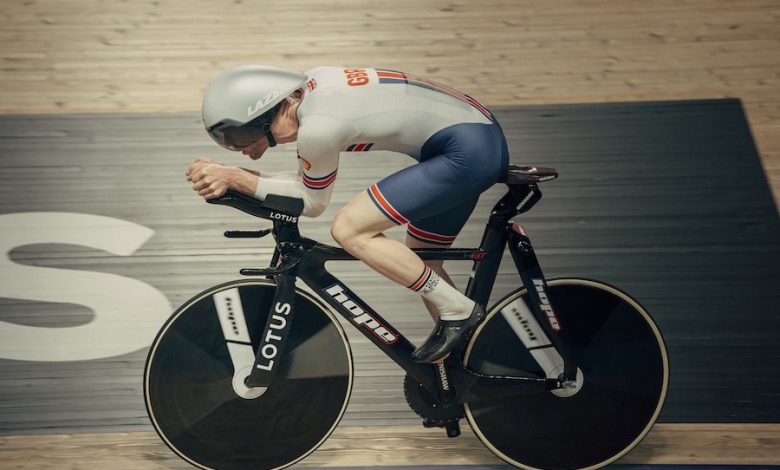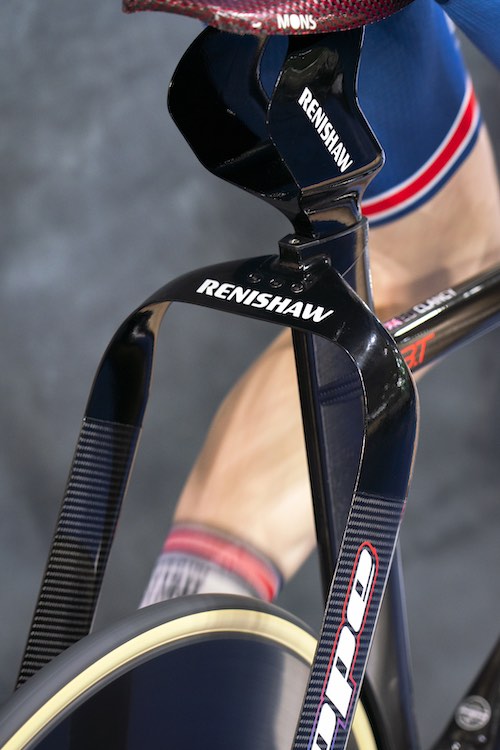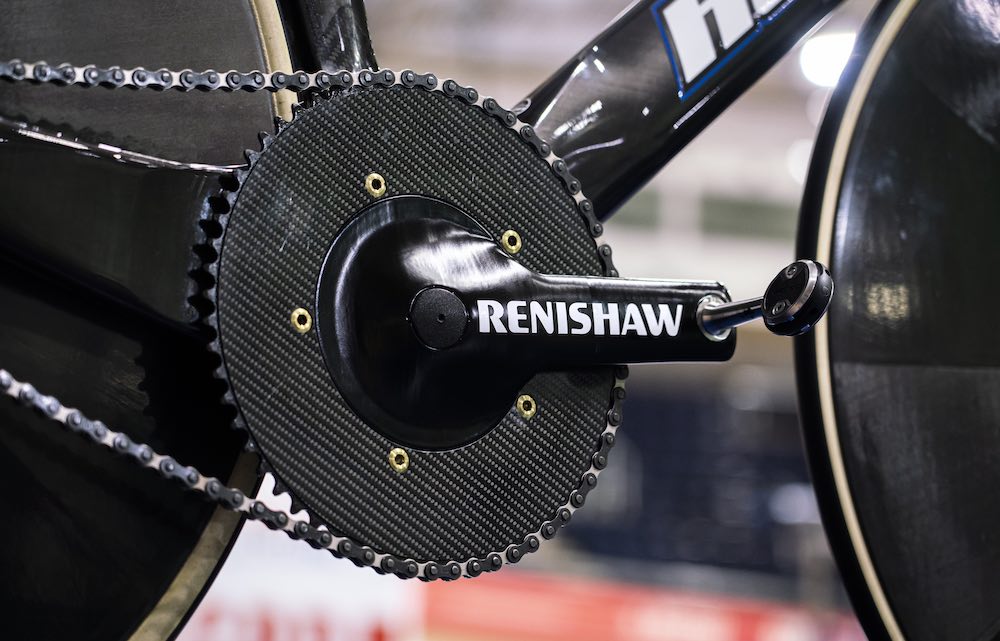Creality Ender 3 V3 SE 3D Printer, 250mm/s Faster FDM 3D Printers with CR Touch Auto Leveling, Sprite Direct Extruder Auto-Load Filament Dual Z-axis & Y-axis, Printing Size 8.66 * 8.66 * 9.84 inch
$229.00 (as of June 21, 2025 23:57 GMT +00:00 - More infoProduct prices and availability are accurate as of the date/time indicated and are subject to change. Any price and availability information displayed on [relevant Amazon Site(s), as applicable] at the time of purchase will apply to the purchase of this product.)What does it take to win an Olympic gold medal? Sure, you’ve undoubtedly thought of the grueling training, the perfected techniques, and the sheer willpower of the athletes. But have you ever stopped to consider the pivotal role of the equipment, particularly in the case of track cycling? For Team Great Britain, the answer lies in innovation—specifically, through the groundbreaking use of partially 3D printed track bikes.

Buy Photon Mono M5 Get Free 1KG Resin
The Competitive World of Track Cycling
The velodrome is where speed and precision collide. Track cycling is an arena where mere seconds can determine the difference between a gold medal and an “also-ran” finish. In 2024, Team GB etched their names into the annals of history at the Paris Olympics by clinching the gold medal in the women’s team sprint event. What’s fascinating is how their bikes, integrated with 3D-printed components, played a crucial role in their success.
A Closer Look at Olympic Track Cycling
Track cycling is not just about pedal power. It’s a sophisticated blend of human ability and mechanical precision. The athletes are, of course, the stars, but their tools—namely, their bikes—are meticulously engineered to optimize speed and performance. The importance of this equipment becomes glaringly obvious when you consider the infinitesimal time margins that separate winners from losers in these high-stakes races.
The Merger of Cycling and 3D Printing Technology
So, how did 3D printing come into play? The Hope Lotus track bike that British Cycling rode to gold is a marvel of modern engineering. It incorporates several custom metal components, 3D printed by UK-based Renishaw, the official additive manufacturing partner of British Cycling.
Meet the Makers: Renishaw, Lotus, and Hope Technology
This winning innovation was not the work of a single entity but rather a collaboration. Renishaw, Lotus Engineering, Hope Technology, and the British Cycling team worked together to create a track bike geared specifically for Team GB’s athletes. Each contribution was integral, showcasing what can be achieved when engineering talent collides with cutting-edge technology.
Renishaw: Additive Manufacturing Pioneer
Renishaw has been at the forefront of additive manufacturing for some time. They’ve leveraged their extensive expertise in creating 3D printed components that offer immense advantages in terms of both weight and aerodynamics. Their specialization isn’t confined to cycling; they’ve made significant strides in various sectors such as medical implants, aerospace, and automotive industries.
Lotus Engineering: A Legacy of Speed
Lotus Engineering brought their storied expertise in automotive speed and agility to the table. Known for their high-performance vehicles, Lotus’s contribution ensured that the bike’s design was at the pinnacle of aerodynamic efficiency.
Hope Technology: Precision in Manufacturing
Hope Technology, another renowned name in the cycling world, collaborated on the manufacturing aspects, ensuring that each component was flawless and fit for the caliber of the athletes it would serve.
Innovative 3D Printed Components
Several key bike components like the crank, seat stay bridge, dropouts, and seat post were 3D printed. The precise manufacturing allowed for the integration of unique internal structures that both reduced weight and maintained strength.
The Seat Post and Seat Bridge
One of the standout features of the bike is the split seat post paired with a seamlessly integrated seat bridge. These elements were crucial in maximizing the aerodynamics while reducing overall weight. When you are in a competition where milliseconds matter, these components could mean the difference between first and second place.
The Crank
Another remarkable element is the titanium crank, which was designed with an internal lattice structure. This specific structure is not only lightweight but also incredibly strong, a testament to the capabilities of 3D printing in addressing and overcoming traditional manufacturing limitations.
The Importance of Customization
Every bike was tailored precisely to the measurements of the athletes. Such bespoke customization would be both cumbersome and costly using traditional manufacturing techniques. Additive manufacturing makes this customization not just feasible but also efficient, underscoring its increasingly pivotal role in high-performance sports.

$30 off $400+ Anycubic Products with code AC30OFF
The Impact: Winning Gold at Paris 2024
When Emma Finucane, Sophie Capewell, and Katy Marchant took to the track at the Saint-Quentin-en-Yvelines velodrome, they were not just riding bikes; they were riding cutting-edge pieces of technology. Their victory, secured by a narrow margin of 0.473 seconds, set a new world record, demonstrating the crucial role that innovative equipment can play.
Performance Refined by Technology
The collaboration between Renishaw, Lotus, Hope Technology, and British Cycling didn’t just result in a great bike; it created an unbeatable machine. As Oliver Caddy, Lead Project Engineer at British Cycling, pointed out, the commitment and reliability of the Renishaw team were instrumental in ensuring that the performance refinements were realized ahead of the 2024 Olympics.
Continuous Improvement
This triumph wasn’t a one-off feat. Back in 2020, Renishaw had already contributed 3D printed parts to Team GB’s bikes for the Tokyo Olympics. The consistent application of advanced technology shows a continuation of a fruitful partnership, fine-tuning and evolving the equipment to meet the growing demands of the sport and its athletes.
Broader Implications of 3D Printing in Sports
Winning gold is a notable achievement, but the implications of using 3D printing technology extend beyond the cycling track. The advantages offered by additive manufacturing in sports equipment serve as a compelling example for other industries to follow.
Bespoke Design Across Sports
The concept of creating equipment tailored to the athlete’s specific needs isn’t confined to cycling. Sports like running, swimming, and even team sports could benefit immensely from bespoke, high-performance gear crafted through 3D printing.
Case Study: Paralympian Performance Enhancements
For instance, Paralympian athletes have already begun to see the benefits of 3D printed gear. Customized 3D printed gloves have been developed to offer comfort and improved performance, advocating the transformative potential of this technology in enhancing athletic abilities across the board.
Broadening the Horizons
The Paris 2024 Olympics showcased the world’s first 3D printed skate part, further highlighting the reach of this technology. It’s a moment of realization that the advancements in additive manufacturing are not just incremental but transformative, spanning across multiple disciplines and applications.

The Economic Angle: Growth of the Additive Manufacturing Market
The triumphs in sports are supported by hard economic facts. The market for consumer products in additive manufacturing in 2023 generated $2.6 billion and is projected to grow to billion by 2033. This explosive growth at a 26.8% CAGR highlights how entrenched and vital 3D printing will become in the years to come.
Market Segmentation
| Market | Revenue (2023) | Projected Revenue (2033) | CAGR |
|---|---|---|---|
| Consumer Products | $2.6 Billion | $28 Billion | 26.8% |
With this growth, companies in various sectors will become more invested in research and development, further expanding the range and quality of 3D printed products.
Key Takeaways from Team GB’s Success
Team Great Britain’s victory at the Paris 2024 Olympics isn’t just a story of sporting excellence; it’s a narrative steeped in innovation, collaboration, and the effective utilization of technology.
The Unseen Hand of Innovation
What’s striking is how much of this story lies beneath the surface. While the athletes rightfully basked in their moment of glory, the engineers, designers, and manufacturers were the unsung heroes. Their behind-the-scenes work made that record-breaking performance possible.
The Future of Competitive Sports
The broader implication is clear: the future of sports is inexorably linked with technological innovation. From the aerodynamically optimized helmets in cycling to footwear in running and customized swimwear, the equipment athletes use will continue to evolve, giving them the marginal gains needed to break records and redefine excellence.

Conclusion
The journey of Team GB to gold in the women’s Olympic team sprint on partially 3D printed track bikes serves as a testament to how far technology has come in shaping the world of sports. It underscores the importance of not only the athletes but also the groundbreaking innovations that provide them with the edge needed to excel at the highest levels.
In years to come, as more industries incorporate additive manufacturing into their processes, we can look back at this achievement as a significant milestone. It stands as a beacon, illuminating the endless possibilities that technology and human ingenuity can create when they converge.
The next time you watch an Olympic event, you’ll know that behind every medal, there’s a story of relentless innovation, meticulous craftsmanship, and an unwavering quest for perfection.
Buy Photon Mono M5 Get Free 1KG Resin









